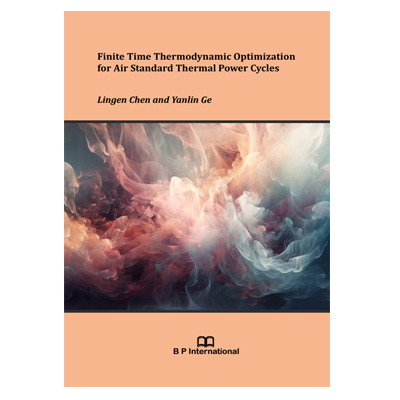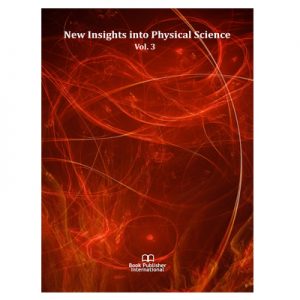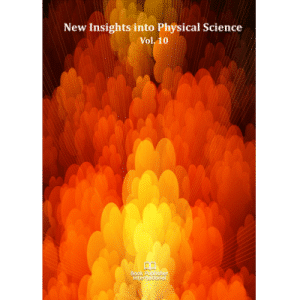As thermal power cycle, internal combustion engine is widely used in industry, agriculture, communication and transport, as well as national defense construction. It is the main power source of automobile, tractor, agricultural machinery, engineering machinery, shipping, locomotive, military vehicle, moving and emergency electric station and so on. The fundamental thermodynamic model of internal combustion engine is air standard thermal power cycle, include air standard Otto, Diesel, Atkinson, Brayton, Dual, Miller, Porous Medium (PM), Dual-Miller, Melatis-Georgious, Lenoir and rectangular cycles.
As an important branch of modern thermodynamics, finite time thermodynamics is a powerful tool to analyze and optimize various performances of thermodynamic cycles and processes. The application of classical thermodynamic principles and the solution of thermodynamic bounds for finite-time or finite-size thermodynamic processes, which are characterized by a finite exchange rate that happens between the system and the environment, were the first step toward the field of finite time thermodynamics. In 1975, Curzon and Ahlborn derived the efficiency at maximum power output point of a Carnot engine which was called CA efficiency when finite heat transfer rate between working fluid and heat reservoir was considered. The CA efficiency was an important symbol of the birth of finite time thermodynamics and provided a new analysis method for heat engine which was characterized by finite rate and finite period. This is the first and perhaps best known finite time thermodynamics study result. Since the mid-1970s, studies seeking thermodynamic process performance limits and achieving thermodynamic process optimization have made important progress in the fields of physics and engineering. In physics, Chicago scholars named it finite time thermodynamics. Profs. Berry R S, Andresen B, Salamon P, Hoffaman K H, Bejan B, Kosloff R, Sieniutycz S, Tsirlin A M, Feidt M, Wu C, Yan J Z, Angulo-Brown F, and Sun F R are the major contributors among many scholars.
Using finite time thermodynamics to study the air standard internal combustion engine cycle includes two aspects. The first aspect is to make certain assumptions about the actual air standard thermodynamic process of internal combustion engines, get the thermodynamic and mathematical model, give a series of constraints, and find out the target extreme value under the given path. The second aspect is to find out the cycle optimal path under the given target extreme value. Based on the first aspect, this book considers the specific heat characteristics of the working fluid, takes the power (work) output, thermal efficiency and ecological function as the target extreme values, and studies the performance characteristics of the air standard thermal power cycles. This work will make the theoretical research of air standard cycle closer to the practical.
The content of this book is divided into 20 chapters. Chapter 1 presents the fundamental concepts of finite time thermodynamics and reviews the development in finite time thermodynamic studies for air standard thermal power cycles. Chapter 2 studies the optimal performances of the endoreversible Otto cycle when the specific heats of working fluid vary linearly with its temperature. Chapters 3 and 4 study the optimal performances of the endoreversible and irreversible Diesel cycles when the specific heats of working fluid vary linearly with its temperature, respectively. Chapters 5 and 6 study the optimal performances of the endoreversible and irreversible Atkinson cycles when the specific heats of working fluid vary linearly with its temperature, respectively. Chapters 7 and 8 study the optimal performances of the endoreversible and irreversible Brayton cycles when the specific heats of working fluid vary linearly with its temperature, respectively. Chapter 9 studies the optimal performance of the irreversible Dual cycle when the specific heats of working fluid vary linearly with its temperature. Chapter 10 studies the optimal performances of the endoreversible Miller cycle when the specific heats of working fluid vary linearly with its temperature. Chapters 11 and 12 study the optimal performances of the irreversible universal six-branch reciprocating heat engine cycles under two specific heat models (specific heats are constants and specific heat ratio varies nonlinearly with its temperature), respectively. Chapters 13-15 study the optimal performances of the irreversible Dual-Miller cycles when the specific heat ratio of working fluid is constant and varies linearly and nonlinearly with its temperature, respectively. Chapter 16 studies the effect of finite piston speed on the optimal performance of the irreversible Dual-Miller cycle when the specific heats of working fluid are constants. Chapters 17-20 study the optimal performances of the endoreversible and irreversible Melatis-Georgious cycles when the specific heats of working fluid are constants and vary linearly and nonlinearly with its temperature, respectively.





